To access the other sheets in the Forest Regions unit, check out the See Also section.
Quebec is a province in Eastern Canada.
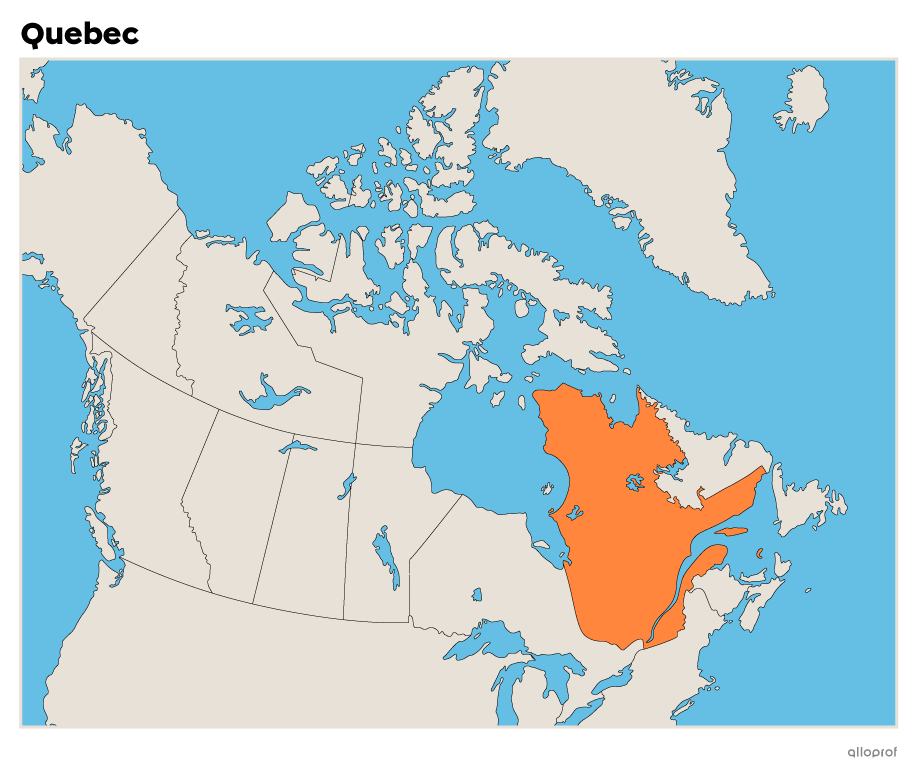
Quebec is divided into different vegetation zones and subzones.

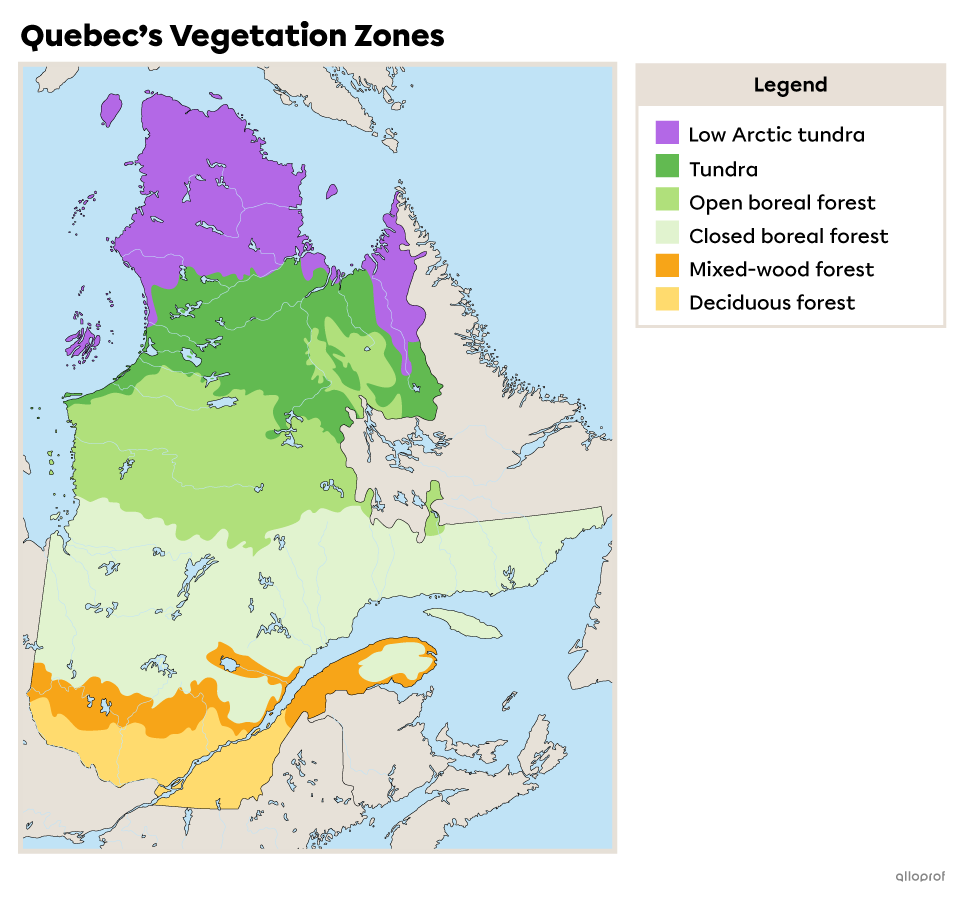
Source: Direction des inventaires forestiers, 2022[1].
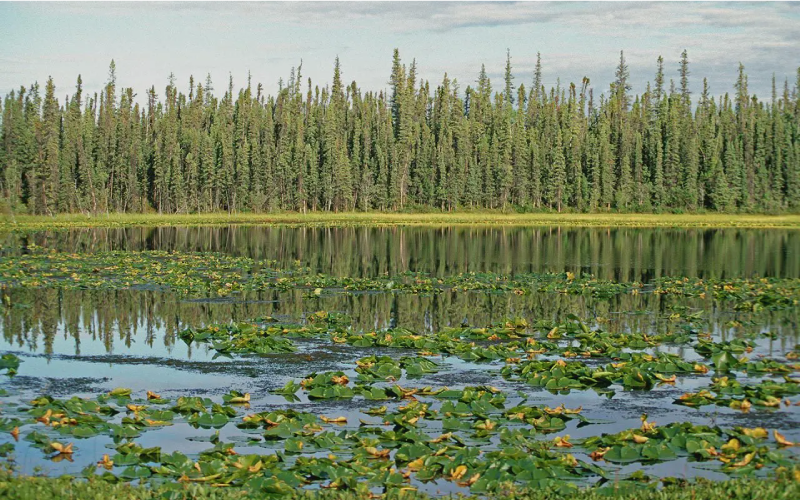
Source: Petit étang dans la forêt boréale de l’Est [Photographie], Canards Illimités Canada, s.d., (URL). Rights Reserved*[2]
-
Late 1700s: Logging rights (known as concessions) were given to private logging companies that cut and exported wood to Great Britain.
-
Early 1800s: Logging rights in public forests were given to private companies as a way of creating jobs in the province.
-
Early 1900s: The government introduced a requirement that wood from public lands be processed in Quebec. This turned Quebec into a major player in the pulp and paper industry around the world.
-
Early 1960s: The government reduced the number of concessions so that the public sector could benefit more from logging.
-
1986: The Forest Act officially brought an end to concessions and replaced them with Timber Supply and Forest Management Agreements (TSFMA). These agreements guaranteed a wood supply for processing mills. In return, companies with a TSFMA had to ensure regeneration of the forests they logged.
-
2004: The Coulombe report was released following a commission on the management of public forests. The report led to several changes in how Quebec’s public forests were managed. For example, in the early 2010s, the TSFMAs were replaced by supply guarantees. The government took over from companies in building logging roads, regenerating and protecting forests, and other tasks, in order to ensure better forest management[3].
Regeneration refers to the renewal of something like a resource.
Forest Industry
The forest industry is an important economic sector in several regions of Quebec, including Abitibi, Saguenay–Lac-Saint-Jean and Mauricie. In 2020, there were 53 480 jobs in the forest products sector, from logging and processing to manufacturing wood products[4].
Several different tree species are harvested in Quebec and each species has its own uses. Sometimes, a single species has different qualities. For example, high quality spruce is used to make musical instruments, while lower quality spruce is used to make wood pallets for transportation.
| Species | Examples of uses |
|---|---|
|
Black spruce |
|
|
Jack pine |
|
|
Balsam fir |
|
|
Yellow birch |
|
|
Trembling aspen |
|
|
Sugar maple |
|
Source: Association forestière du sud du Québec, s.d[5]; Boisvert, Roy-Cadieux, Krysztofiak, Poulou-Gallet, Riendeau et Ste-Marie, 2015[6]. |
|
-
Lumber refers to wood used for construction, such as planks and beams.
-
Plywood is a wood panel made of thin layers of wood glued together and is used, for example, to build floors and walls.
Recreational Tourism
Recreational tourism is an important economic activity because it creates jobs. Quebec’s public forests are territories that are open to the public for various uses, including wildlife reserves and areas for hunting and fishing. Each type of use involves a particular kind of planning and development.
In parks run by the Société des établissements de plein air du Québec (SÉPAQ), people are hired for:
-
administrative tasks
-
communications
-
conservation of natural environments
-
wildlife protection
-
planning and development of the territory
-
building maintenance
-
customer service
Fauna refers to the species of animals living in a given territory.
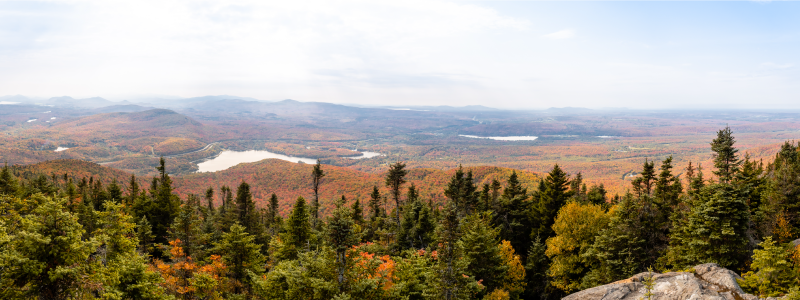
This park is part of the SÉPAQ network
Source: Awana JF, Shutterstock.com
Recreational Tourism
Recreational tourism also plays an important social and cultural role because it provides people with access to public forests for hiking, camping, kayaking, hunting and other activities.
Parc national des Hautes-Gorges-de-la-Rivière-Malbaie offers a wide variety of activities, such as:
-
Hiking
-
Canoeing
-
Kayaking
-
Fishing
-
Biking
-
Rabaska expeditions
-
Snowshoeing
-
Cross-country skiing
-
Ice climbing
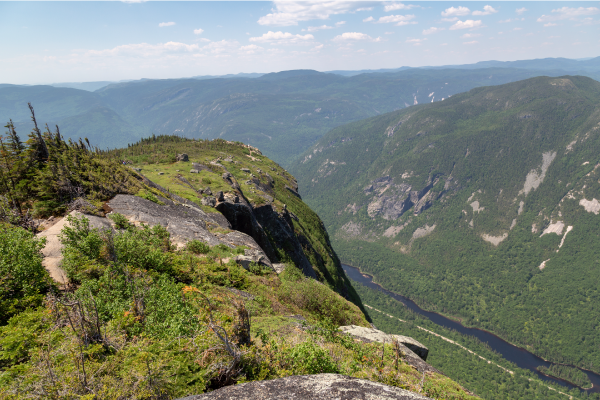
View from the Acropole-des-Draveurs trail, one of the most challenging trails in the SÉPAQ network.
Source: Potifor, Shutterstock.com
Ancestral Lands
Quebec’s forest regions play an important cultural role for the province’s Indigenous nations because these are their ancestral lands where they can reconnect with their roots and practise traditional activities, such as trapping.
Quebec’s forest regions are divided into two main types:
-
private forests
-
public forests
This land is owned by individuals who are permitted to do various things on it, like build a cottage, hunt or fish. However, they still have to respect the laws regarding logging and the use of forest regions.
Public forests are lands owned and managed by the government.
Northern Boundary of Forests That can be Logged
A line was drawn to indicate the public lands in Quebec that can be logged: forests north of this line cannot be logged. This line is called the northern boundary for forest allocations (Limite nordique des forêts attribuables).
Logging Roads
There are logging zones across Quebec. They are accessed by logging roads, which the Quebec government is usually responsible for building and maintaining.
Primary Processing Mills
Quebec has many mills for processing trees into various products.
Controlled Zones
Quebec’s forest regions are also divided into various controlled zones, including:
-
national parks
-
wildlife reserves
-
controlled harvesting zones known as ZECs
-
hunting and fishing outfitters
Some of the zones in these regions are also governed by agreements between the government and various Indigenous nations so that these nations can access their ancestral lands and, in some instances, play a role in managing them.
In its caterpillar form, the spruce budworm attacks the buds of softwood trees, mainly balsam fir and white spruce. While it has always been present in Quebec, there are cyclical epidemics approximately every 30 years, during which these insects kill approximately 75% of firs in the oldest tree stands (a homogenous group of trees that have uniform characteristics)[7]. They first attack the oldest tree stands and then, if they need more food, they spread to younger tree stands. These epidemics are a natural part of a forest’s cycle, but they can be damaging to the forest industry and landscape. The province of Quebec has been experiencing a spruce budworm epidemic since 2022.
To find out more about this insect and its impact on Quebec’s forests, consult the article The Spruce Budworm on the Quebec government’s website.
The development of Quebec's forests, such as logging or recreational tourism, must respect the rights of Indigenous peoples living on their ancestral lands. These communities are to be included in the decision-making process, be it with the government or businesses.
Managing forests in collaboration with First Nations can take different forms based on the different visions of the various communities.
The logging company Resolute Forest Products has a partnership with the Kitigan Zibi Anishinabeg community from the Algonquin First Nation, in the Outaouais region. Renewed in 2020, this agreement allows the company to develop and log on Algonquin land in exchange for cutting rights.
To access the rest of the unit, please consult the following pages.
- Direction des inventaires forestiers. (2022). Zones de végétation et domaines bioclimatiques du Québec. Gouvernement du Québec. https://mffp.gouv.qc.ca/nos-publications/zones-vegetation-domaines-bioclimatiques/
- Canards Illimités Canada. (s.d.). Petit étang dans la forêt boréale de l’Est [Photographie]. https://www.canards.ca/notre-travail/foret-boreale/ *Extrait employé par Alloprof conformément à la Loi sur le droit d’auteur dans le cadre d’une utilisation équitable aux fins d’éducation [https://laws-lois.justice.gc.ca/fra/lois/c-42/page-9.html].
- Bégin, A. et Schepper, B. (2020, octobre). Portrait de l’industrie forestière au Québec : une industrie qui a besoin de l’État. Iris. https://cdn.iris-recherche.qc.ca/uploads/publication/file/Forets_WEB.pdf
- Ministère des Forêts, de la Faune et des Parcs. (2021). Ressources et industries forestières du Québec. Gouvernement du Québec. https://mffp.gouv.qc.ca/wp-content/uploads/PortraitStatistique_2020.pdf
- Association forestière du sud du Québec. (s.d.). Propriétés du bois. https://afsq.org/information-foret/bois/proprietes-des-bois/
- Boisvert, C., Roy-Cadieux, F., Krysztofiak, V., Poulou-Gallet, C., Riendeau, J. et Ste-Marie, P. (2015). Espace Temps - 2e secondaire [cahier de savoirs et d’activités]. ERPI.
- Ministère des Forêts, de la Faune et des Parcs. (s.d.). La tordeuse des bourgeons de l’épinette. Gouvernement du Québec. https://mffp.gouv.qc.ca/les-forets/protection-milieu-forestier/protection-forets-insectes-maladies/fiches-insectes/tordeuse-bourgeons-epinette/